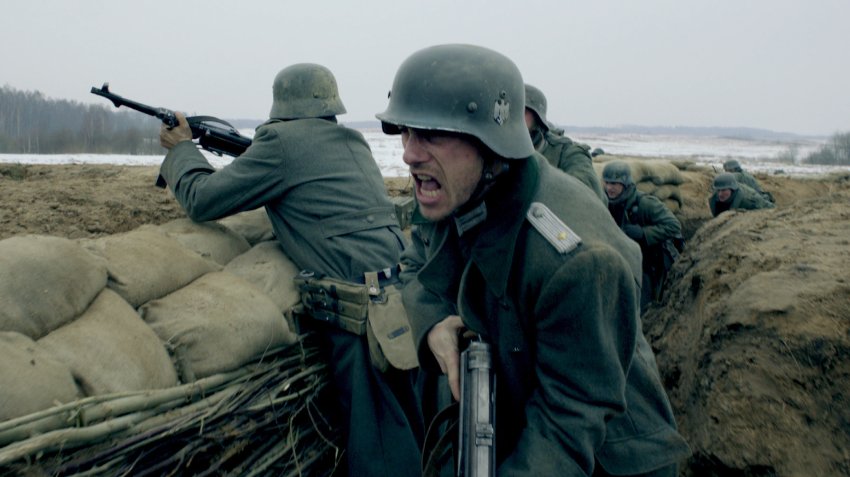By the end of the war the Germans had 12.5 million men under arms. Over 4 million died during the war.
Survival depended upon where you were stationed.
If you were in the East there was a much higher chance of being killed and wounded than if you were in the West or in Denmark or Norway.
At the edges of the most vicious battles, such as the fighting near Vienna near the end of the war, or in Silesia, or in Czechoslovakia (where the Germans won major victories til the very last day) the chances of dying were very high.
It also depended upon your branch. There was over an 80 percent chance of a U-Boat sailor dying before the war ended and very few sailors from the beginning made it to the end.
Aircrews also suffered, and this depended on where you were stationed and when you joined the Luftwaffe.
The more experience you had, the greater chance of survival, however, the more experience you had, the more risky missions you were expected to take.
It turns out if a soldier survives the first 90 days of combat his odds of surviving the war grow exponentially, according to the book “Dirty Little Secrets of WW2”.
The most deadly time for a new soldier is the first couple of weeks at the front when the chances of dying are very high.
But if you were a soldier who joined the Wermacht in 1939 and were part of Operation Barbarossa there was probably only a 60 percent chance you would make it through the war, even less that you would make it through the war, survive and remain uncaptured.
In 1941 alone almost a million men died in the East of an original fighting force of 4 million, mostly from cold and hunger. Survival was a matter of luck in many cases.
Bidermann, a Leutnant in the 132nd Infantry Division who was stationed near Sevastopol had the extreme good fortune to have his division transferred to the Leningrad offensive right before the debacle at Stalingrad.
The chances of a soldier surviving from the beginning through the Stalingrad debacle were less than 5 percent. The result for Bidermann was that he survived that turbulent period but ended up being captured at the end of the war in the Courland Pocket while Operation Hannibal frantically worked to remove men to Denmark in the final days.
Meanwhile, the chances of a soldier in Norway surviving the war were in the 90s of percent, despite the vicious need for violent and often torturous reprisals by Norwegian patriots against German soldiers.
In the US, the overall chances of any soldier surviving the war from the beginning were about 84 percent. In Germany, the number was roughly around 70 percent. The Germans fought for a longer period of time in more places against tougher enemies, terrain and weather and it doesn’t matter if death comes from a bullet, starvation or frostbite — you’re still dead.

Theodore Lee is the editor of Caveman Circus. He strives for self-improvement in all areas of his life, except his candy consumption, where he remains a champion gummy worm enthusiast. When not writing about mindfulness or living in integrity, you can find him hiding giant bags of sour patch kids under the bed.

